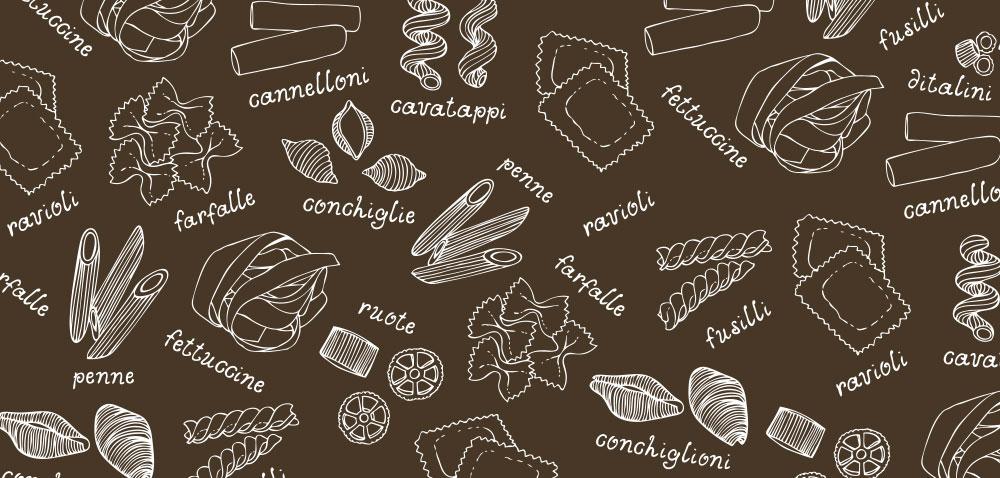300 shades of pasta

How many types of pasta can you name? Spaghetti? Lasagne? Penne? Ravioli? Fusilli? There some of the easy ones. But did you know, there are over 300 different types of pasta. (And probably very few people in the world who can name them all.)
So what’s the difference? Well, there’s the shape – everything from long and thin to short and fat, ribbons, bows, tubes, flat sheets, noodles or stuffed shells. Then there’s the ingredients, whole-wheat, buck-wheat, durum wheat, semolina, rice, eggs – there are plenty of variations on this theme. There’s also colour and texture, but perhaps the most influential factor when it comes to identifying a pasta is where it comes from.
Pasta has been a staple part of the Italian diet for centuries and as the nation has evolved, so have the recipes, with many regions having their own unique take on pasta. The speciality in Piemonte for example is agnolotti, meat-filled squares with a nutty taste. Sardinia has culurgioni, ricotta cheese, egg and saffron wrapped in a pasta parcel shaped like a wheat tip. Meanwhile in parts of northern Italy, they tuck into strozzapreti, which literally translated means ‘strangled priests’ and is rumoured to have got its name from the choking of priests gobbling the delicious pasta too enthusiastically.
However many types of pasta you know, chances are you’ve got your own special way of serving it and making it your own. If you do, congratulations, nothing can be more Italian than doing it your way.
So what’s the difference? Well, there’s the shape – everything from long and thin to short and fat, ribbons, bows, tubes, flat sheets, noodles or stuffed shells. Then there’s the ingredients, whole-wheat, buck-wheat, durum wheat, semolina, rice, eggs – there are plenty of variations on this theme. There’s also colour and texture, but perhaps the most influential factor when it comes to identifying a pasta is where it comes from.
Pasta has been a staple part of the Italian diet for centuries and as the nation has evolved, so have the recipes, with many regions having their own unique take on pasta. The speciality in Piemonte for example is agnolotti, meat-filled squares with a nutty taste. Sardinia has culurgioni, ricotta cheese, egg and saffron wrapped in a pasta parcel shaped like a wheat tip. Meanwhile in parts of northern Italy, they tuck into strozzapreti, which literally translated means ‘strangled priests’ and is rumoured to have got its name from the choking of priests gobbling the delicious pasta too enthusiastically.
However many types of pasta you know, chances are you’ve got your own special way of serving it and making it your own. If you do, congratulations, nothing can be more Italian than doing it your way.
